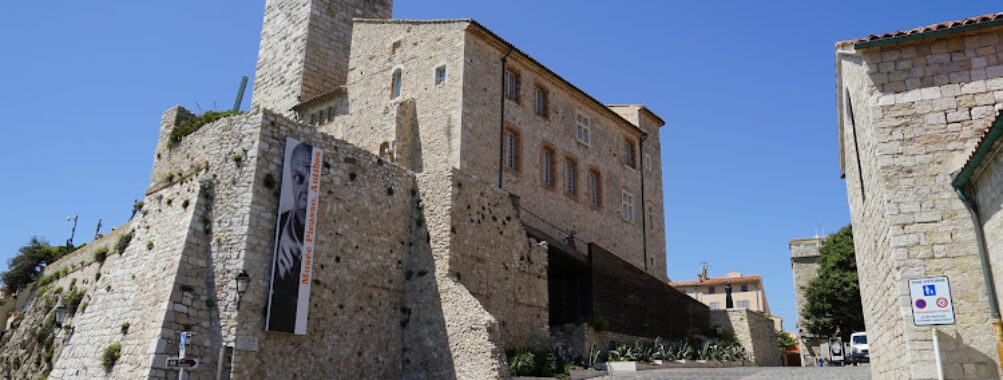
Musée Picasso
Table of Contents
Description
Located in the heart of Antibes, the Musée Picasso stands as a testament to one of art history’s most revolutionary figures. This former Grimaldi château, where Pablo Picasso himself worked in 1946, now houses an extraordinary collection of the master’s works. But let me tell you – this isn’t your typical stuffy museum experience. The building itself is part of the artwork, perched right on the Mediterranean, with windows that frame the sea like living paintings.
Key Features
• The permanent collection showcases 245 of Picasso’s works, including the remarkable La Joie de Vivre
• Stunning terrace sculptures by Germaine Richier and Joan Miró
• Original studios where Picasso created some of his most celebrated pieces
• Medieval castle architecture blending perfectly with modern art installations
• Rotating contemporary art exhibitions that complement Picasso’s works
• Breathtaking Mediterranean views from nearly every gallery
• Collection of Picasso’s ceramics created during his time in Vallauris
• Photography section documenting Picasso’s life on the French Riviera
Best Time to Visit
I’ve found that early mornings, right when the museum opens, offer the most serene experience. The light streaming through those gorgeous windows is simply magical before noon – trust me, your photos will thank you later! Summer months can get pretty crowded (especially July and August), so I’d suggest visiting during shoulder season – April, May, or September. The museum tends to be quieter on weekdays, particularly Tuesdays and Thursdays. And here’s a local secret: the first Sunday of each month offers free admission, though expect larger crowds.
How to Get There
Getting to the Musée Picasso is actually pretty straightforward. If you’re coming by train, hop off at the Antibes station and enjoy a scenic 15-minute walk through the old town. Driving? There’s parking available at the Port Vauban lot, just a five-minute stroll away. But honestly, my favorite way to arrive is by following the coastal path from Juan-les-Pins – it takes about 40 minutes, but those views are worth every step. Local buses 100 and 200 stop nearby too, with the ‘Vieille Ville’ stop being your best bet.
Tips for Visiting
Okay, let me share some insider tips I’ve gathered from countless visits. First off, grab an audio guide – they’re totally worth the extra few euros and really bring the artwork to life. The museum can get warm during summer afternoons (those medieval walls, y’know?), so dress in layers. Speaking of which, wear comfortable shoes because those stone floors can be tough on your feet after a couple hours of art-gazing.
Don’t rush through – I’d recommend setting aside at least 2-3 hours to really soak it all in. The second floor tends to be less crowded, so start there if you arrive during peak hours. Oh, and bring your camera but remember – no flash photography allowed! The museum café isn’t anything special, so I’d suggest grabbing lunch at one of the charming restaurants in the old town instead.
Kids are welcome, and there’s actually a pretty cool activity sheet available at the entrance to keep them engaged. Just remember to grab it before starting your tour. The museum shop has some unique souvenirs that you won’t find elsewhere in Antibes – I always pick up something small for my art-loving friends back home.
Last but not least, check their website before visiting as they sometimes have special exhibitions or events that might affect opening hours. And if you’re an art history buff like me, try to time your visit with one of their excellent guided tours – they’re usually offered twice daily and give fascinating insights into Picasso’s time here.
Location
Places to Stay Near Musée Picasso
Find and Book a Tour
Explore More Travel Guides
No reviews found! Be the first to review!